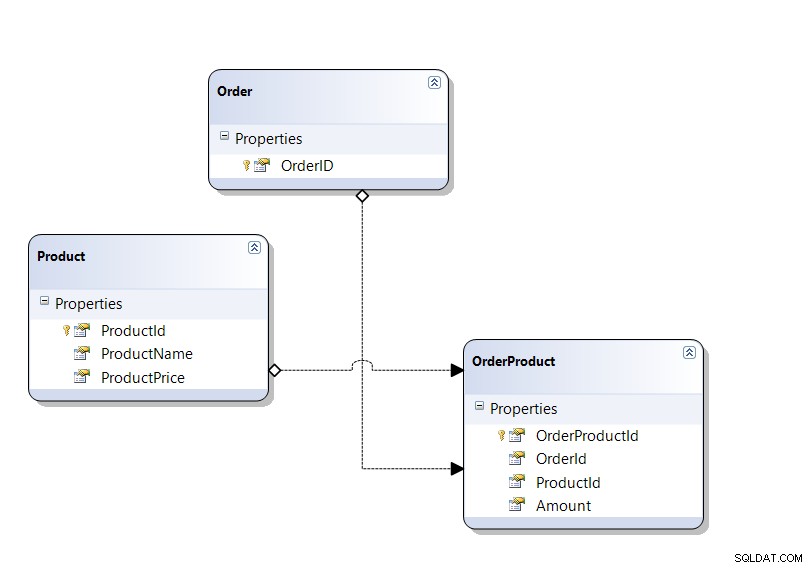Hur Linq 2 SQL-dataklasser ser ut för mig: 
Koden som följer med den:
//I have 2 columns in my dataGridView, Id 1st amount 2nd
//I added 3 items for testing
List<Tuple<int, int>> cart = new List<Tuple<int,int>>();
foreach (DataGridViewRow row in dataGridView1.Rows)
{
if (row.Cells[0].Value != null && row.Cells[1].Value != null)
{
cart.Add(new Tuple<int, int>(Convert.ToInt32(row.Cells[0].Value.ToString()),Convert.ToInt32(row.Cells[1].Value.ToString())));
//Now each list item will have .Item1 (productId) and .Item2 (amount)
}
}
using (DataClasses1DataContext dataContext = new DataClasses1DataContext())
{
//The tables you add in the dataContext are accessible by name
Order order = new Order();
dataContext.Orders.InsertOnSubmit(order);
dataContext.SubmitChanges(); // Submit once so we get an orderId
foreach (Tuple<int, int> product in cart)
{
OrderProduct orderProduct = new OrderProduct();
orderProduct.OrderId = order.OrderID;
orderProduct.ProductId = product.Item1;
orderProduct.Amount = product.Item2;
dataContext.OrderProducts.InsertOnSubmit(orderProduct);
}
dataContext.SubmitChanges();
}
